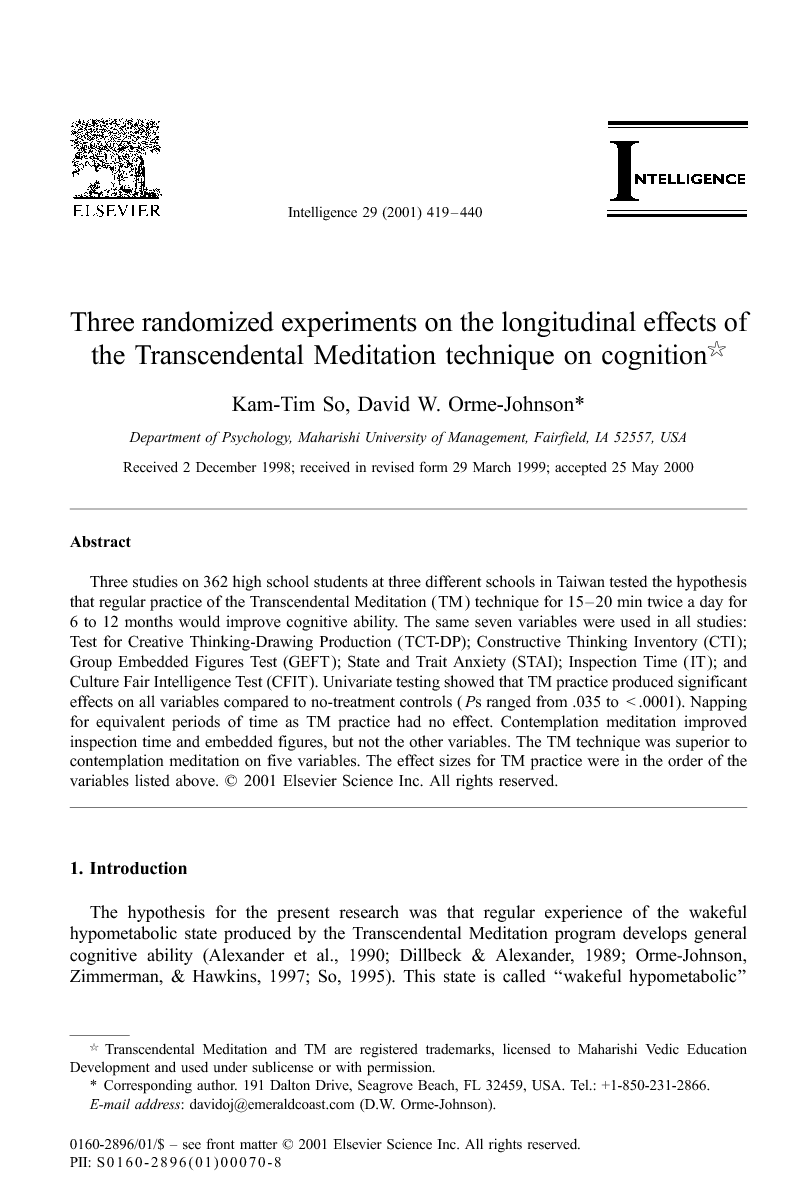The hypothesis for the present research was that regular experience of the wakeful hypometabolic state produced by the Transcendental Meditation program develops general cognitive ability Alexander et al., 1990, Dillbeck & Alexander, 1989, Orme-Johnson et al., 1997 and So, 1995. This state is called “wakeful hypometabolic” or “restful alertness” because it is a combination of markedly decreased metabolism, heart rate, respiration rate, etc., as in sleep, together with mental alertness, as indicated by increased EEG alpha power and coherence Dillbeck & Orme-Johnson, 1987, Jevning et al., 1992, Orme-Johnson, 1973, Travis & Wallace, 1999, Wallace, 1970 and Wallace, 1986. A number of physiological changes during the TM technique predict cognitive improvement, such as increased blood flow to the brain Jevning et al., 1996 and Jevning et al., 1978 and increased EEG coherence in parameters that are correlated with cognitive improvement Dillbeck & Araas-Vesely, 1986, Dillbeck & Bronson, 1981, Levine, 1976, Nidich et al., 1983 and Orme-Johnson & Haynes, 1981. Studies of the effects of the TM program on event-related potentials show shorter latency, higher amplitude, and broader cortical representation of sensory and cognitive evoked responses, all predictive of improved cognitive performance Banquet & LeSevre, 1980, Cranson et al., 1990, Goddard, 1989, Kobal et al., 1975, Lyubimov, 1994 and Wandhofer et al., 1976. TM practice has been shown to increase the neuropeptide vasopressin (O'Halloran et al., 1985) and to improve memory Dillbeck, 1982 and Pagano & Frumkin, 1977, which could be expected, since there is evidence that increased vasopressin enhances memory (Van Londen et al., 1998). TM practice also reduces the major stress hormone cortisol, both during meditation (Jevning, Wilson, & Davidson, 1978) and longitudinally outside of meditation MacLean et al., 1997, Walton & Levitsky, 1994 and Walton et al., 1995. The relevance of this to cognition is that studies have shown that increasing cortisol levels impair memory (Lupien & McEwen, 1997), and that prolonged cortisol elevation may induce hippocampal atrophy with associated deficits in hippocampal-dependent memory tasks (Lupien et al., 1998).


